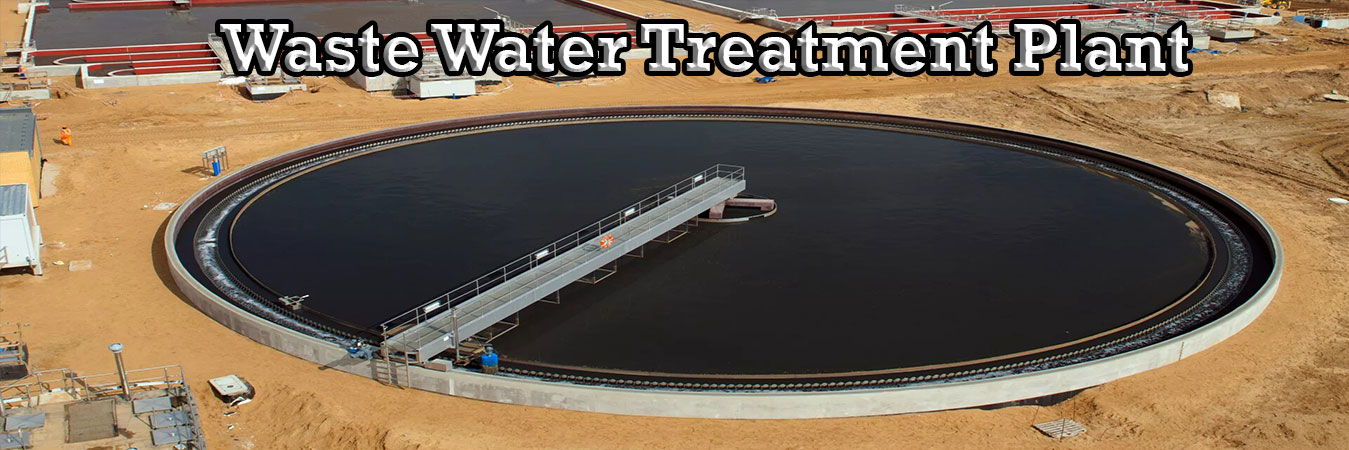
WELCOME
GJ WATER TECHNOLOGIES
Wastewater treatment plants play a vital role in preserving the environment and safeguarding public health. As urbanization and industrialization continue to expand, the volume of wastewater generated also rises, posing a significant challenge to our ecosystems. In this essay, we will delve into the functions and significance of wastewater treatment plants, highlighting their pivotal role in maintaining a clean and sustainable environment.
Wastewater, often referred to as sewage or effluent, consists of a complex mixture of pollutants, including organic matter, nutrients, pathogens, and various chemicals. If left untreated, this contaminated water poses a severe threat to aquatic life, public health, and the environment as a whole.
One of the primary objectives of wastewater treatment plants is to remove or reduce pollutants from sewage before it is discharged into natural water bodies. By removing contaminants such as suspended solids, nutrients (nitrogen and phosphorus), and harmful microorganisms, these facilities prevent water pollution and its disastrous consequences.
Natural ecosystems, including rivers, lakes, and oceans, are sensitive to changes in water quality. Untreated wastewater can disrupt these ecosystems, leading to the eutrophication of water bodies, which can result in oxygen depletion, algal blooms, and the decline of aquatic species. Wastewater treatment plants mitigate these negative impacts by improving the quality of discharged water.
Pathogens present in wastewater can spread diseases when released into the environment. Effective treatment processes in wastewater treatment plants significantly reduce the risk of waterborne diseases, ensuring public health is protected.
Wastewater treatment plants are complex systems comprising various processes designed to remove different types of contaminants. The key components of a typical wastewater treatment plant include:
This stage involves the screening and removal of large debris, such as sticks, plastics, and rocks, which can damage equipment or interfere with subsequent treatment processes. Grit removal also occurs during this phase.
During primary treatment, physical processes, such as sedimentation and flotation, are employed to separate suspended solids from the wastewater. This stage significantly reduces the organic load in the water.
Secondary treatment employs biological processes to further break down organic matter in the wastewater. This is typically achieved through the use of microorganisms that consume organic substances, converting them into simpler, less harmful compounds.
In cases where exceptionally high water quality standards are required, tertiary treatment processes may be applied. These processes can include additional filtration, chemical treatment, and advanced disinfection techniques to remove remaining contaminants.
Before final discharge, wastewater is disinfected to eliminate any remaining pathogens. Common disinfection methods include chlorination, ultraviolet (UV) irradiation, and ozone treatment.
Wastewater treatment plants are unsung heroes of environmental conservation and public health protection. They mitigate the adverse impacts of human activities by purifying sewage and ensuring that treated water is safe for release into the environment. These facilities are essential in maintaining the ecological balance of natural water bodies, reducing the spread of waterborne diseases, and preventing pollution. As the global population continues to grow and urbanize, the role of wastewater treatment plants becomes increasingly critical in building a sustainable and healthy future for our planet. Thus, we must continue to invest in their development and improvement to address the evolving challenges of wastewater management.
"There are some commonly asked questions relative to water quality within a plant".
A Wastewater Treatment Plant is a facility designed to treat and remove contaminants from domestic, industrial, and commercial wastewater, making it safe to discharge into the environment or reuse.
Bangalore faces increasing water scarcity and groundwater depletion. Wastewater treatment is essential to recycle water for non-potable use, reduce pollution in lakes and rivers, and comply with pollution control norms.
Bangalore generates over 3,000 million litres of wastewater daily, and treating it is vital to prevent pollution and water scarcity.
Treated water is reused for lake rejuvenation, irrigation, and industrial purposes, helping conserve freshwater resources
We offer a range of technologies including:
MBBR (Moving Bed Biofilm Reactor)
SBR (Sequential Batch Reactor)
MBR (Membrane Bioreactor)
ASP (Activated Sludge Process)
Compact STP units for apartments and villas
Only 43% of treated wastewater is currently reused.
Major reuse includes lake revival (67%), followed by irrigation and industrial use.
There's significant potential to scale up reuse, especially in construction and landscaping.
Must comply with CPCB and KSPCB discharge norms.
Follow guidelines under the Water Act 1974 and NGT directives.
Urban wastewater reuse policy encourages 50% reuse by 2030
Yes! Many apartment complexes use decentralized STPs to:
Treat sewage locally.
Reuse water for gardening and flushing.
Reduce dependency on municipal systems.
Greentivity even offers free audits for apartment STPs between 150–2000 KLD
We offer WWTP systems ranging from 1 KLD to 1000+ KLD, tailored to suit specific site requirements.
Depending on capacity and site conditions, installation can take from 15 days to 3 months. We ensure timely project execution within budget.
Yes. We provide complete support including design documentation, drawings, and liaising with KSPCB for new installations or upgrades.
